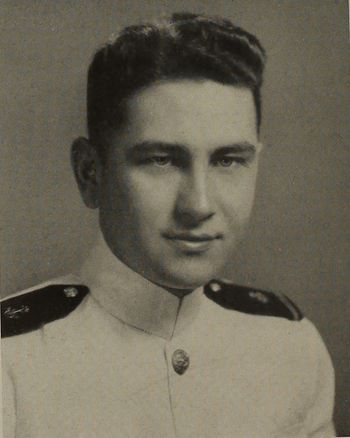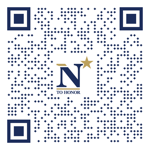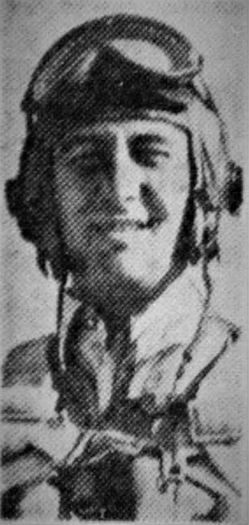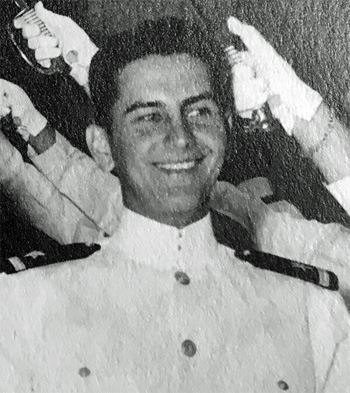STEPHEN A. SKOMSKY, LTJG, USN
Stephen Skomsky '49
Lucky Bag
From the 1949 Lucky Bag:
Stephen A. Skomsky
Binghamton, New York
Though known for his penchant for heated argument, "S. A." was a likeable sort of guy, and his occasional outbursts were really the results of exasperation, not orders from the Kremlin. The "Skomper," was a natural for heavy work on the plebe and JV football teams, where he won awards, but his attentions were turned in another direction when Dick Johnson, one of the swellest boys to ever breathe USNA air, introduced him to Dotty, with whom Steve plans to face the music come June of '49. In returning from Youngster Christmas, "Good Steve" became just plain "Big Steve," when his spotless record was marred—had he had one of his beloved planes, he might have made it back on time. With fifteen months in enlisted Naval Aviation behind him, "S. A." plans to go after those wings of gold.

Stephen A. Skomsky
Binghamton, New York
Though known for his penchant for heated argument, "S. A." was a likeable sort of guy, and his occasional outbursts were really the results of exasperation, not orders from the Kremlin. The "Skomper," was a natural for heavy work on the plebe and JV football teams, where he won awards, but his attentions were turned in another direction when Dick Johnson, one of the swellest boys to ever breathe USNA air, introduced him to Dotty, with whom Steve plans to face the music come June of '49. In returning from Youngster Christmas, "Good Steve" became just plain "Big Steve," when his spotless record was marred—had he had one of his beloved planes, he might have made it back on time. With fifteen months in enlisted Naval Aviation behind him, "S. A." plans to go after those wings of gold.
Loss
From Honor States:
… Lieutenant Junior Grade Skomsky was a pilot of a Hellcat fighter based at the Naval Air Station Boca Chica, Florida. On November 10, 1952, he was flying over the Strait of Florida in the Atlantic Ocean, when his aircraft disappeared.
Other Information
From the Press and Sun Bulletin, Binghamton, December 18, 1950:
After graduating from the Naval Academy, Stephen left San Diego as gunnery officer and wave commander aboard the Union, an attack cargo ship. Destination was Japan, where the Union was to train the 8th Army in amphibious warfare.
The Union helped train the 1st Cavalry Division in this phase of warfare for only two days when the Korean war broke out. Thereafter the Union took part in the three major amphibious landings of the Korean war, all of them real.
CARRIED TROOPS
When the war started, the Union proceeded to a port where the 24th Division was being loaded for transport to Korea. By the time the Union reached port, the 24th had departed.“They had been loaded aboard anything that would float,” Stephen recalled.
The Union then returned to Yokohama where it took aboard the 1st Cavalry Division, which it had been training only a few days previously. The cavalry division was landed on the east coast at Pohang. The landing was unopposed except for some guerrilla action. The enemy was seven miles north of the port.
The Union then returned to Kobe, Japan, and loaded elements of the 1st Marine Division for an amphibious landing at Inchon.
UNCOMFORTABLE CARGO
“We had about 300 troops aboard our ship with a cargo of ammunition, gasoline and cold weather clothing,” Stephen said. The gasoline and ammunition were an uncomfortable cargo in enemy waters.The naval officer pointed out that the marines’ winter clothing went ashore with them at Inchon. Trouble developed later in getting it to the front line fighters from the depots.
As wave commander it was part of his job to take the marines ashore in small boats.
“We were in the fifth wave, he said. “The first 10 waves were marines who had been fighting at Pusan, the second 10 waves were South Korean marines, and the final 10 waves were new marines from the United States.”
HEAVY LOSSES
The first two waves at the Inchon landing suffered heavy losses, he said, but his wave landed without a casualty.“Because of the 26-foot tides at Inchon,” he said, “we had to land our men at 5:30 p. m., at the height of the tide. Landing at night is contrary to normal amphibious strategy, but in this case it had to be done.”
The complete disregard that the Koreans have for human life struck forcibly the Binghamton naval officer at Inchon. Fleeing North Koreans machine-gunned all their political prisoners before they left.
“On the way to Inchon,” he said, “a South Korean soldier spit on the deck of one of our ships. His officer shot him through the head and tossed the body overboard.”
TO GET FLIGHT TRAINING
Three weeks after the Inchon landing, the Union carried marines, and a cargo of gasoline and ammunition for an assault landing at Wonsan. The ship was forced to cruise along the coast for five days while the largest mine field of the war was swept. By the time the landing was made, the South Koreans’ Capital Division had swept into Wonsan by land, and the operation was made unopposed.The Union was sent back to San Francisco to be overhauled. On the trip back, Stephen was ordered to report to Pensacola on January 8 for flight training.
From researcher Kathy Franz:
Stephen went to North High School in Binghamton, New York. He enlisted in the Navy and reported to the Naval Academy in July 1945 as a Seaman 1st Class (ACM), Service #897 07 78. In 1949 he graduated from the Naval Academy and married Dorothy Ann Harmer on June 3.
Stephen completed his aircraft carrier qualifications aboard the USS Monterey, cruising in the Gulf of Mexico in late 1951. Part of his qualifying test consisted of taking off and landing his SNJ Texan trainer six successive times. He completed flight training in Pensacola and was sent to advanced training in Corpus Christi.
He was survived by his wife, daughter Jo Anne, age 2, 10-month-old son Stephen, Jr., his parents Stephen and Irene, and his brother Louis J. (’53.) His mother once said she was proud of her sons for being in the Naval Academy. “They did it the hard way. Both went to North High School, both enlisted in the Navy, and both studied hard to make the grade.”
Stephen has a memory marker in New York.
Photographs

The "category" links below lead to lists of related Honorees; use them to explore further the service and sacrifice of alumni in Memorial Hall.



